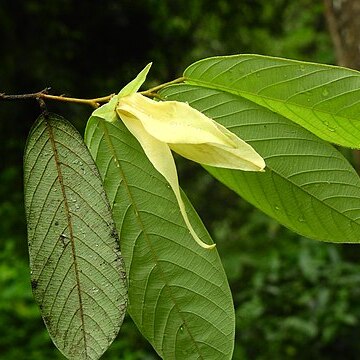Climbers [rarely trees], with simple hairs. Inflorescences leaf-opposed, extra-axillary, or superaxillary, 1-flowered, bracteate. Flowers (not known for only Chinese species) bisexual. Sepals 3, valvate, ± connate at base. Petals 6, in 2 whorls, free, valvate; outer petals flat or 3-ridged, long and narrow, leathery, basally broadened and concave; inner petals much shorter than outer, ovate, lanceolate, or oblong, narrowed at base and often with a gap between petals, cohering to cover stamens and carpels. Stamens many; connectives apically enlarged and concealing anther locules, apex truncate. Carpels many, oblong; ovules 1-5 per carpel, lateral; styles clavate. Fruit apocarpous; monocarps stipitate, subglobose [or globose to ellipsoid-cylindric], moniliform when more than 1-seeded; epicarp thin to thick. Seed usually 1 per monocarp, subglobose.

